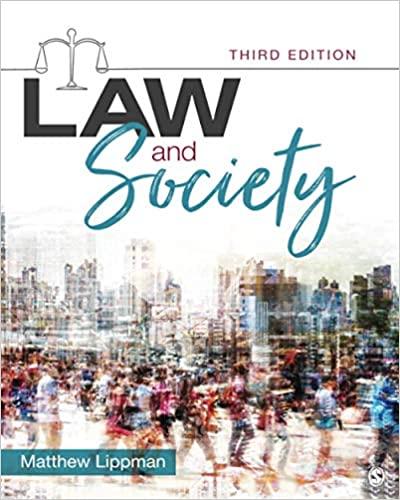Question
Where in the text does the author use faulty logic to present an argument? Whatlogicalfallacies are used? Science Tells Us WhatIs True,but Not WhatIs Right
Where in the text does the author use faulty logic to present an argument? Whatlogicalfallacies are used?
Science Tells Us WhatIs True,but Not WhatIs Right
KatharineHayhoeandDouglasHayhoe
KatharineHayhoereceived her doctorate in environmental science from the University of Illinois at Urbana-Champaign.Hayhoeis a climate scientist who has written extensivelyon the subject of climatechange. Her book on that subject is titledA Climate for Change: Global Warming Facts for Faith-Based Decisions(2011). She is also the CEO of Atmos Research and Consulting, a firm that provides scientific data and models on the future impact of climate change.DouglasHayhoe,Katharine's father, received his doctorate in education from Toronto University. His work focuses on the intersection of faith and science, and especially how to reconcile the two in the classroom. This piece was first published byBiologos,a website about science in the context of faith, in 2017.
Science provides humans with a powerful way of understanding creation and harnessing it for the common good. When Galileo's observations, supporting the idea that the Earth and other planets revolved around the Sun, were criticized ascontrary to biblical revelation, he replied that the use of our intellect in a systematic way must be what God intended:"I do not feel obliged to believe that the same God who has endowed us with senses, reason, and intellect has intended us to forgo their use andby some other means to give us knowledge which we can attain by them."1
Over the last five centuries, consistent application of the scientific method has enabled immeasurable advances in technology and medicine. Experiments typically begin with asking questions, formulating hypotheses, planning investigations and making observations. Scientific research continues through interpreting and analyzing data, building models and sharing results.2Throughout these steps run the common threads of the peer review process (subject to the scrutiny of peers most knowledgeable with the topic in question), and repeatability (results can be duplicated by independent researchers).3These two factors are key to how"science works, by achieving consensus,"a consensus that is based not on opinion and conjecture, but on documented fact and proven theory.4
Science identifies physical relationships and principles that explain the world around us. Often, these principles can be extrapolated far beyond the conditions in which they were observed. This ability to extrapolate lends science a unique and powerful predictive power. For example, after the planet Uranus was discovered by Herschel in 1781, astronomer Le Verrier used Newton's Law of Gravity to deduce the existence of another planet perturbing its orbit. Based on mathematical analyses, he was able to predict exactly where this new planet, Neptune, would be discovered.5As ecologist HughGauchstates in a book on the scientific method, science builds on"deductive and inductive logic"to make"bold claims of rationality and truth."6
In the area of climate change, the scientific method can document how climate is changing. Science can test all of the hypotheses that could explain the observed change and identify the one that is most consistent with the data: humans are responsible. Physical principles regarding the infrared absorption by heat-trapping gases and the exchange of heat between the atmosphere and ocean form the basis of complex earth system models. These models are what we use to understand the implications of the choices our society makes: What will the future look like if we continue to depend on fossil fuels for energy, compared with a future where we transition to other, cleaner energy sources?
What science cannot do, however, is tell us which choice is the right one. As the American Association for the Advancement of Science states,"There are many matters that cannot usefully be examined in a scientific way."7This concept is amplified by theK-12 science standards, which say that,"Science and technology may raise ethical issues for which science, by itself, does not provide answers and solutions."8The limitations of science were expressed even more vividly by Erwin Schrdinger, the Nobel prize-winning Austrian physicist, when he said,"[Science] puts all our experience in a magnificently consistent order, but it is ghastly silent about all and sundry that is really near to our heart ... it knows nothing of beautiful or ugly, good or bad, God and eternity."9
To answer the difficult questions (How should we respond to climate change? Is genetic engineering acceptable? Why are we here? Is there hope for the future?), we need to look beyond facts, data and observations. To paraphrase the author of Hebrews, scienceis the evidence of things seen; faith, on the other hand, is the"evidence of things not seen"(Hebrews 11:1, King James Version). Our ultimate significance in life, the inner sense of the infinite that we possess, our final purpose and destiny: These are topics on which science is silent, but our faith is loud. As N.T. Wright points out in hislecture"Can a Scientist Believe the Resurrection?"neither historical evidence alone, nor scientific evidence alone, will convince someone to become a believer.10We have to be open to ways of knowing suitable to the new creation: hope, faith and love. Our knowing is based on the hope of a new life, faith in the risen Christ and experiencing the Father's love for us. Wright concludes,"All knowingis a gift from God, historical and scientific knowing no less than that of faith, hope, and love; but the greatest of these is love."11That love is what leads us toward the answers to our deepest and most difficult questions
Step by Step Solution
There are 3 Steps involved in it
Step: 1

Get Instant Access to Expert-Tailored Solutions
See step-by-step solutions with expert insights and AI powered tools for academic success
Step: 2

Step: 3

Ace Your Homework with AI
Get the answers you need in no time with our AI-driven, step-by-step assistance
Get Started


